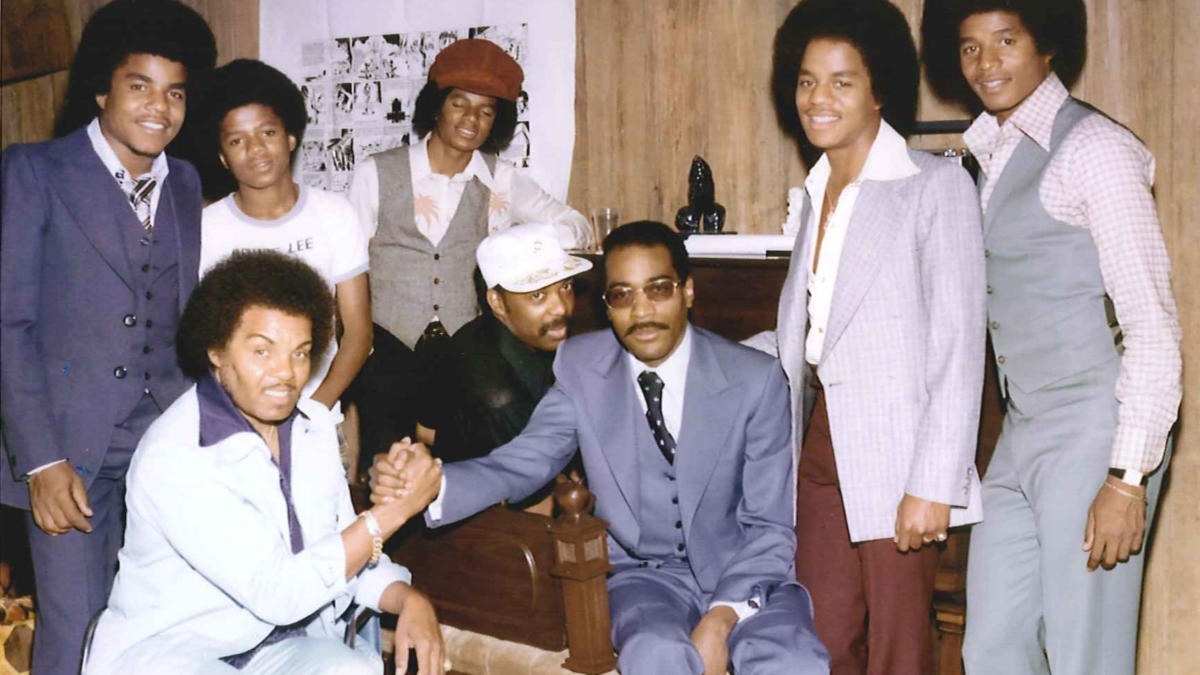“Look, man, I’m old. Huff is old. Tarsia is old, older than me by 10 years. Never say never, right, but I think that somebody else has got to do it.”
That’s Kenny Gamble talking, he, the lion of Philadelphia R&B – with Leon Huff and Thom Bell – when it comes to labels (Philadelphia International Records, or PIR), songwriting, producing and publishing. Tarsia is Joe Tarsia, the one-time engineer, owner and founder of the legendary Sigma Sound Studios on N. 12th Street where Gamble, Huff, Bell, their team of musicians (MSFB) and Tarsia’s crack crew made and mixed some of soul music’s most historical, innovative sounds.
Despite being the city’s most famously regarded studio (think classics from The O’Jays, Harold Melvin & the Blue Notes, with and without Teddy Pendergrass, the Stylistics, David Bowie’s “Young Americans” and more), the buck doesn’t stop at Sigma or soul when it comes to Philly’s studio culture. That means Victory, Kajem, Studio 4, and Larry Gold’s studio, along with respected, vintage king seats such as Cameo-Parkway’s label space at 309 S. Broad, Virtue on N. Broad, and more sound-tech places where ‘60s garage, ‘70s funk and ‘80s punk – free jazz, electronic experimental music, and heavy metal too – all made this town into a well-rounded and beloved studio town.
That is a scene and an all-around sound that Max Ochester – Philly music archivist and owner of the Brewerytown Beats record store and label – has been looking to celebrate since March. That’s when he cobbled together heralded Sigma Sound veterans (illustrious names such as Jim Gallagher, Arthur Stoppe and Peter Humphreys, the latter of whom works with Ochester now in a reissue remastering capacity) and preservationists for a #SaveSigma brainstorming bash. Their goal, then and now, is to move forward on a future for the gutted N. 12th Street building purchased by Chinatown-based investor real estate developers for $1.55 million in 2015.

That funky future doesn’t solely involve a house of worship dedicated solely to Sigma Sound – bringing back cherished sound-nerd vintage technology such as its original mixing boards, not unlike the equipment Tarisa donated to Drexel University in his name over a decade ago – but making a museum for all of Philadelphia music.
“It would not be a Sigma museum, despite its renown,” said Ochester. “Sigma is so prominent because of its hit-making position and fame – Gamble and Huff and R&B as well – but also, because Sigma is the only studio building from Philly’s glory days that is left standing. The idea is to celebrate everything that is Philadelphia music and the way it was recorded.”
To say that other Philly music folk have been down this road before is an overstatement. From the involvement of the Rhythm & Blues Foundation during its time in Philadelphia (2005- 2008), to the current and past membership of the Philadelphia Music Alliance, to Mayor John Street and Governors Ed Rendell and Tom Ridge, to Philly live music avatar Larry Magid, along with Gamble and Huff themselves – all have poured their blood, sweat and tears into making museums dedicated to, alternately, R&B on a national level, R&B from a local perspective, rock n’ roll from a local perspective (many of the old-school local music biz movers-and-shakers still resent that we lost the Rock Hall to Cleveland), to a hard-focused Gamble-Huff-and-Bell shrine.
At times, and for a long, long time, it has been the tug of war of egos and tribute – who gets how much celebration, lionization and canonization? – that has torn any progress of building a genuinely regal hall of fame asunder. Ever hear of the Sigma Sound documentary from Visual Innovations, Inc., “The Sound Heard ‘Round The World” that was supposed to come out in 2016? Probably not. Though they found rare and extensive footage and interviewed all historic (still living) parties, the doc was mostly squashed, then, because many of the Philadelphians involved with licensing their music to the filmmakers wouldn’t allow it. They wanted to hold onto the rights for their own projects.
“Philadelphia is a huge part of the story, be it R&B or rock and roll. It’s always been part of the hall, that story.”
– Greg Harris, Rock and Roll Hall-of-Famer, 2008
Time ticks on. Nobody gets younger. Other top towns take advantage of the hole in the music memorabilia museum market – say, Nashville, which opens the National Museum of African American Music this September. Even Cleveland’s Rock and Roll Hall of Fame, very quietly right before the pandemic struck, took a deep piece of the pie with its boss, Greg Harris – the Philadelphia expatriate and one-time used vinyl dealer who joined the Rock and Roll Hall of Fame in 2008 after 14 years as a senior executive at the National Baseball Hall of Fame and Museum in Cooperstown – acquiring large swatches of memorabilia and archival materials from Magid, Gamble & Huff and local radio great Jerry Blavat, for its own Philly memorabilia display and historical archives.
“We installed a permanent Philly exhibit, one expanded and combined with other soul cities such as Memphis and Detroit, and it’s a really nice set-up,” said Harris. “Philadelphia is a huge part of the story, be it R&B or rock and roll. It’s always been part of the hall, that story. This is now something dedicated, and colorful. To have Sigma Sound next to Memphis’ Famous Studios is paramount. Larry Magid is the greatest champion of Philly music, and whatever we do, he wants it – in good humor – to be bigger. But, now with this, Philly will be preserved forever.”
Beyond soul, there are Larry Magid’s original Electric Factory contracts and Sansom Street venue gig posters, and Blavat’s on-air sign-ons and offs together with a deep photo catalog of The Geator with Sinatra, Sammy Davis and more. But the Rock Hall exhibition dedicated to Philly soul has totems such as Gamble and Huff’s demo making cassette recorder from 1977 (Sony Model CF-580) and Bobby Smith of The Spinners suit, 1979 vintage, designed by Harvey Louis Krantz, out for all to see.
“My letters from fans, my outfits, I’m proud to have it all there at Cleveland’s Rock Hall, all 60 years plus worth of my career’s memories,” said Blavat.
So what now for Philly?
You have to go back to go forward.
“You came with me when Larry Magid had that cocktail party at his house with Kenny Gamble and the guys for Cleveland’s Rock and Roll Hall of Fame guys,” Blavat reminded me of a gathering, not more than three years ago, to pursue interest in Philly’s own historic vision.
“Before that, the Rhythm & Blues Foundation board had big get-togethers at The Kimmel with Aretha Franklin and Dionne Warwick … we were raising money for them for a minute, until then they left town. I gave $25,000, other guys gave a lot more – nothing happened. We had some lavish dinners – you remember. Plus Bob Brady, Magid and I tried to get the Philadelphia History Museum at Atwater Kent around the corner from where I broadcast – it would have been perfect. It’s between Center City, Old City, in the historic district, The board couldn’t make it happen. That’s the story of all this. Nobody could make it happen beyond talk. The documentary on Sigma fizzled out, which was a shame.

Sigma was a great hit-making studio and they talked of building something in tribute. Along with a Rhythm & Blues Museum, Kenny wanted to have his own museum. It’s tough making it ALL happen. A lot of ego has to be put aside and lots of money has to be put on the table. Maybe it’s better that all of the Philly memorabilia, or something dedicated to Philly R&B, goes to the Rock Hall in Cleveland – they know what to do with it. I don’t think anyone else but them has the time, money or patience to do it right.”
Damon Williams, the board chairman of the Rhythm & Blues Foundation – an independent nonprofit organization founded by his aunt, R&B great Ruth Brown, and dedicated to the historical and cultural preservation of rhythm and blues music – remembers well the push for several museums dedicated to soul, and-or Gamble & Huff.
Now running the Foundation from NYC where he lives, the one-time Philadelphian is senior VP of Music Choice with Comcast as one of its biggest distributors for audio, video and enhanced interactive media. Williams recalls his aunt standing up for the rights and fights of Black artists going back to the 1940s and the struggles with record labels and Hollywood studios to be better and rightfully compensated. Along with providing financial support and medical assistance, the foundation creates new educational outreach programs.
“Kenny Gamble was our secretary when we were in Philly,” said Williams. “There was lots of talk and work devoted to a Rhythm & Blues museum. Even when Kenny stepped away as secretary – he has down his time in pursuit of music and awareness – and we left town, Mr. Gamble continues to be a big supporter of the foundation. I continue to support the idea of a museum in Philly. I don’t know if and what he’s planning, but, considering all that is happening with statues and other monuments in the wake of Black Lives Matter, I’d like to see hard, physical tributes to R&B greats everywhere, and in every city. Why shouldn’t there be a statue of Gamble & Huff, or a library in their name? That’s what Nashville does. Why not Philly?”
Why not Philly? That is exactly what has been on everybody’s mind in local music, young and old. Especially Max Ochester’s mind. Along with releasing old, rare, unheard, and new music from North Philly free jazz locals the Sounds of Liberation, West Philly’s gospel greats The Thompsons, and the toast of Graterford Prison, the nine-piece, all-inmate ensemble Power of Attorney, whose 1972 demos he’ll release digitally at July’s end, the archivist-aficionado believes that this city’s place in music history – soul and beyond – must be recognized and celebrated.
“Philadelphia has always been thought of as a city with one step in the past before they move forward,” he said.
Now, that past is the city’s step forward, at least where a possible all-studio museum is concerned.
At March’s #SaveSigma meeting at SpringArts’ 448 N. 10th property, the old (and new) souls of Philly soul watched engineer Arthur Stoppe’s vintage equipment slideshow, heard from Ochester, Philadelphia Music Industry Task Force organizer and producer-engineer David Ivory (Erykah Badu, The Roots), Patrick Grossi of the Preservation Alliance of Greater Philadelphia, and James Gorecki, the real estate agent who sold Sigma to area investors. They tackled a handful of issues, mainly, that 210 and 212 N. 12th is worth more than what the investors paid for it five years ago, and that they probably weren’t interested in selling.
“But they are interested in renting,” said Ochester last week of the Sigma property that never got off the ground, or developed, as intended, as a condo unit. “Despite the pandemic, there has been movement on both sides. They are willing to discuss renting the first and second floors of the Sigma building for our potential museum. That’s big.”
Now, no offers could be made as yet due to COVID-19 and the stock market’s crashing waves, but the Brewerytown Beats boss man stated that between him, the new investors, the Preservation Alliance – and perhaps Philly’s nonprofit CultureWorks grant program with whom Ochester is on great terms for his proposed large-scale Philly music archive – everyone is looking forward to discussing things with Philly’s Historic Commission, and moving to a positive resolution.
“This looks better now, moving forward, than it ever has,” said Ochester.
Though Ochester is thinking big in regard to his archive, perhaps the tight focus of a local studio museum and tribute-ary is exactly what Philly music’s memorabilia scene needed. While Gamble & Huff and the Philadelphia Music Alliance thought about grand scale for their proposed museums, the Sigma+ space thinks smaller, more compact.

Ochester’s interest in creating a broad, underground-heavy archive (“everybody knows the Gamble & Huff story” he said) started several years ago while in discussion with experimental Philly musician-archivist Jim Meneses – one of The Stickmen who created “Welcome World” cassettes of late ‘70s post-punk/electro Philly bands, and worked with Gerry Givnish’s Painted Bride when it was located on 4th & South. “He had old tapes, gig posters, the Bride was a real hub, it was amazing what he had,” said Ochester of Meneses. “He even salvaged all of the old WXPN radio station studio, rare, live, reel-to-reels when they were located on Spruce Street. I mean he had tapes of Lenny Seidman’s Monk with Charles Cohen, It was amazing. It got me thinking that here I am doing old soul and jazz reissues. Why not expand into a larger Philly music archive, and with that, tell the story of this city’s music through where and how everything was recorded?”
Ochester is happy to say that soul is what Philly is most famous for, the “perfect storm of the ‘70s” that was great writing and great recording, with innovations and creativity on both sides. “Sigma was one of the first studios in the U.S. to have 24 tracks, the pinnacle of what artists were looking for then, that big, polished orchestrated sound of strings and woodwinds. Still, though, Philly is so much more than soul and Sigma.”
Preservation is Max’s motivation, showing off the wares of Philly studios at their finest.
One of Ochester’s greatest, most vocal supporters for an all-studio mandate is one of the city’s heralded engineers, Peter Humphreys. Along with mastering all of Ochester’s releases, Humphreys – the co-owner of Masterworks Studio – has laid hands on pretty much every big and little recording to come out of Philly, Sigma and beyond, since 1975. Many of the post ‘70s recordings Ochester re-releases through Brewerytown, Power of Attorney included, Humphreys was probably there in the first place. That makes Humphreys as crucial to the past as he is the present – mixing records for Brewerytown and speaking up for Ochester when making introductions to Sigma cats like Gallagher and Stoppe.
“First, Rec-O-Art, then Sigma, and Frankford/Wayne – one of the original independent mastering studios founded in Philadelphia in 1967 – in the front of the building, the same address as Sigma so we shared office space – that’s how I got to be so good,” said Humphreys, modestly. “The cutting room of one place was my classroom for the other. I learned how to massage a studio recording,”
Humphreys’ first impression of a museum dedicated to his art form is that it should not be dedicated to one studio or one label, despite how much work he did for Gamble, Huff and Bell.
“Kenny, Leon and Tom get the credit, ultimately, for almost everything Philadelphia – even though people who know KNOW that there were many other labels, rooms and people who contributed,” said Humphreys. “They made it happen. They kicked it off. They were the best organized. And Sigma, where else were you going to get MSFB, and mixers and engineers who could make such rich, lush recordings in some very interesting and inventive ways? We loved each other. We were on the same mission, to make great records. But, there is a bigger story.”
Humphreys mentioned – happily, this writer must add – the contributions of local music archivist and museum culture futurist George Manney. The drummer, producer, early videographer, “Philly Pop Music” documentarian and packrat, was “the first one among us to have that vision: that Philly forever had its own thriving, unique musical scene, to develop and document it, and to involve tourism,” noted Humphreys. “But, George could not get people to pay enough attention – which is the problem, ALWAYS THE PROBLEM. Max has similar ideas to George. He gets things done, is fair, and has great energy, the sort of energy similar to when things were good in the old days. That’s rare in these times.”
The idea of a small, mobile intelligent space dedicated to the sound of The Sound of Philadelphia – all Sounds of Philadelphia – is smart and on the rise. But. But. Never ever believe that a museum as big and grand as a Thom Bell strings and horn arrangement is over and done with. To paraphrase, PIR writer-producers McFadden & Whitehead, “Ain’t no stopping that now, or ever.”
Alan Rubens can speak to that. The chairman of the Philadelphia Music Alliance and its Walk of Fame – a not-for-profit dedicated to preserving and promoting Philadelphia’s rich, complete musical legacy – started his career in the creamiest of Philadelphia R&B, producing and managing the harmonious likes of ‘70s sensations Blue Magic, Major Harris and other such renowned local soul crooners.
“We need somebody to do some championing, some real rallying-around-the-flag, like they have in Nashville. Not so long ago, I got Nashville’s Musicians Hall of Fame and Museum to honor the guys in Philly’s MSFB with a wing. But, I had to remind them – DON’T GIVE THEM TOO MUCH – we want Ronnie Baker’s bass straps. We want Earl Young’s drums. We want a keyboard from Thom Bell. We just need one path instead of running in four different directions; one we can all go down together.”
– Alan Rubens, chairman of the Philadelphia Music Alliance
“Philly soul music saved me from a life of selling insurance,” said Rubens who also happens to be senior VP-executive producer at Time Life Inc., its wealth of archival recordings, audio and video, and the man behind the Malt Shop Memories Cruise.
“My question has always been, ‘how do we honor the Sound of Philadelphia and the sound of Philadelphia?” said Rubens. “Gamble & Huff always wanted a museum of their own. They wanted a broader rhythm and blues museum too. But Larry Magid’s view (he being a founder of the Philadelphia Music Alliance) was, and is, that this city is bigger than its ‘70s urban music scene, that if you want to donate time and money to a Philadelphia music museum, there is Frankie Avalon, Bobby Rydells and Fabian, there is the Cameo-Parkway, there is Len Barry, Hall & Oates, the A’s, The Hooters and Boys II Men. There is jazz, folk and classical. All paths must be covered. Everybody wants their own museum. Everyone wants to maintain and heighten their own legacy. But, if I had my druthers and being the head of the Philly Music Alliance, I would like to honor all of that, to be an extension of those stars on our Walk of Fame. If it meant focusing on a rhythm and blues-only space, that would be great too.”
With that, Rubens and Co. have been scouring the city and its real estate (and costs, “it’s very pricey out there”) through the pandemic for a Center City property that could house all-of-the-above. Like Williams and several other interviewees, the city of Nashville and its overall dedication to music beyond just country, is a model for what could happen in Philly.
“We need somebody to do some championing, some real rallying-around-the-flag, like they have in Nashville,” said Rubens. “Not so long ago, I got Nashville’s Musicians Hall of Fame and Museum to honor the guys in Philly’s MSFB with a wing. But, I had to remind them – DON’T GIVE THEM TOO MUCH – we want Ronnie Baker’s bass straps. We want Earl Young’s drums. We want a keyboard from Thom Bell. We just need one path instead of running in four different directions; one we can all go down together.”
Could that champion still be Kenny Gamble?
The man behind all things PIR and OCF Realty is happily ranting about society’s ills right before July 4, “making my way through the madness of the moment,” he said. “I did not expect that things would be repetitious in my lifetime, the same thing over-and-over.”
In discussing both a G&H museum and another more specifically tailored to all things Gamble-Huff-Bell, the maestro said that they came close on several occasions; “the closest being when John Street was mayor and Ed Rendell was pushing. The people would love it. But, the city has to be behind it. Street not only cooperated – he came to us. He really wanted it. It was going to be beautiful. We commissioned the designers behind the new National Museum of African American History and Culture in Washington, D.C. to do that for us. We did surveys as to how profitable it would be for the city – increase jobs, bring in tourists – a true plus for the economy. The big plus then too was that there was so much still affordable land around. Where can you find a piece of land that is big enough and affordable enough in Center City that can accommodate what a museum of this scale should have? Plus, it has to be accessible to all.
“Anyway, the next administrations came in, and NOTHING. There was no enthusiasm at all.”
That would be Mayors Michael Nutter and Jim Kenney for those keeping score.
“You need your city to truly embrace this idea,” he said. “That Black Music Museum opening up in Nashville this September? That should have been ours. The entire state of Tennessee knows what it is doing. They celebrate Beale Street in Memphis. There’s the Grand Ole Opry and the Country Music Hall of Fame. There’s a Gospel Music Hall of Fame. So much of Nashville’s economy is tied up in music, from playing to publishing to documenting. It’s a sin that we can’t do the same here. We have the artists and the people who made it happen.”
While Gamble groused about being too old at 77 to do anything about his own museum or any public space dedicated to rhythm and blues – “this is a young man’s game” he laughed – a funny thing happened. Gamble opened and broadened and talked about a space that would and could include the long legacy of Philadelphia music from “Eugene Ormandy to Mario Lanza, from Chubby Checker to The Roots. John Coltrane and rock n’ roll. Kal Mann, Bernie Lowe. Ever since “Bandstand” was here, we’ve had it all.”
So is a museum dedicated to all sounds of Philadelphia in his future?
“Never say never,” he replied. “Music is the answer.”





